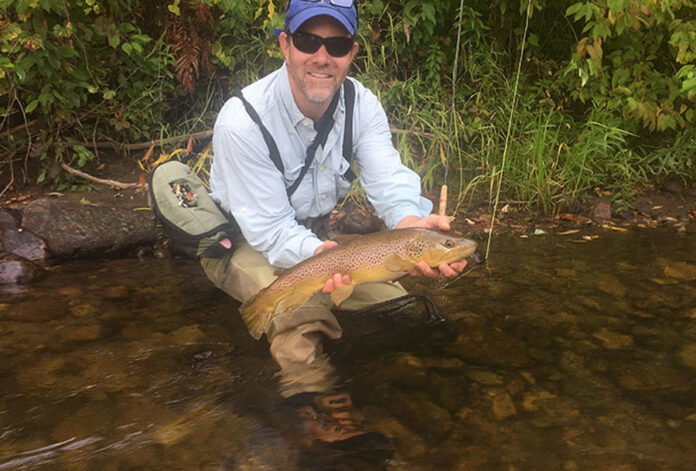Photo by Phil Monahan
Here in Northern New England, bug activity starts to slow in autumn, so you don’t run into as many rising trout—especially on the Battenkill near my home. Couple that with the fact that big browns are on the move and fattening up for winter, and you’ll understand why so many anglers are chucking streamers this time of year. It’s a great way to cover a lot of water and to attract some of the biggest trout of the season.
Many of my colleagues are into casting seriously big streamers, articulated monstrosities that move a lot of water, but I prefer standard-size patterns—smaller than a size 2. Partly, it’s the bursitis in my casting shoulder, but I also feel like I have more control with smaller streamers, and it gives me an opportunity to fish a tandem rig. (Trust me, though: the guys with the big flies do catch big fish.) Here are my favorite patterns for the end of the season:

The rabbit strips and rubber legs give this fly a lot of motion in the water, and the dumbbell eyes ensure that the fly gets down to where the fish are. Click here for Chuck Hawkins’s tying directions.

This is my favorite fly to use as a trailer in a double-streamer rig, and I’ll also use two of these in tandem. According to the fly’s inventor, Stu Thompson, the pattern has caught more than 80 different species of fish. Click the fly name for a tying video.

My friend Eric Rickstad and I discovered this pattern at a Montana fly shop about fifteen years ago, and it has produced big browns every year since. Click here for tying instructions.

This little guy covers a lot of fish foods: bottom-hugging sculpins, a variety of minnows, crayfish, and even golden stonefly nymphs. Fish this on the swing, stripped, or even on the dead-drift. Fish will eat it one of these ways.

Maybe it’s because I grew up in New England, but I have a soft spot for traditional flies. I use hairwings, such as the Black Nose Dace (top) and Mickey Finn, in skinny water or any time I think the fish are pressured. These also make great trailer patterns in a tandem, rig.
Credit: Source link































